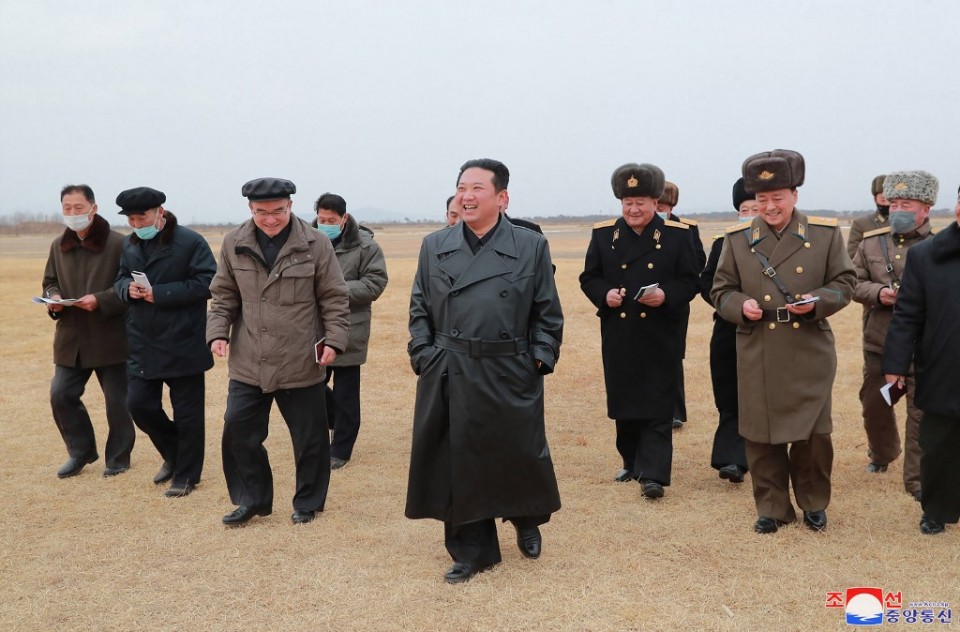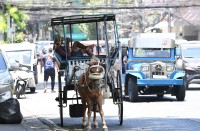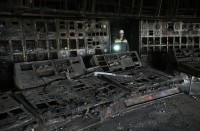
by Cat BARTON / Kang Jin-kyu
SEOUL, South Korea (AFP) — North Korea test-fired two different weapons systems this week, state media said Friday, while highlighting Kim Jong Un’s inspection of an “important” munitions factory.
Pyongyang has conducted six weapons tests in January, including firing hypersonic missiles, doubling down on Kim’s call to build “military muscle” with one of the most intense single-month barrages on record while ignoring US offers of talks.
The official Korean Central News Agency said the Tuesday test involved long-range cruise missiles that hit a “target island 1,800 km away” in the Sea of Japan.
Thursday’s launch of “tactical guided missiles”, meanwhile, was to test “the explosive power of the conventional warhead,” KCNA said.
The flurry of tests follows Kim re-avowing his commitment to military modernisation at a key party speech in December.
Washington imposed new sanctions in response, prompting anger in Pyongyang, which last week hinted it could abandon a years-long, self-imposed moratorium on nuclear and long-range tests.
On Friday, KCNA ran photographs showing Kim, wearing his usual long black leather jacket, surrounded by uniformed officials — their faces pixellated — inspecting a munitions factory that produces “a major weapon system”.
Kim said “the factory holds a very important position and duty in modernizing the country’s armed forces,” KCNA added.
“Pyongyang seems to have the evasion of sanctions in mind — blurring their faces to keep them from the sanctions list down the road,” said Cheong Seong-chang, a senior researcher at the private Sejong Institute.
The reports did not mention if Kim attended this week’s weapons tests, but a separate news item noted his inspection of a vegetable farm close to the site of the Thursday missile launch.
Signs of progress
The January launches are all part of North Korea’s five-year plan to “upgrade its strategic arsenal,” Hong Min, of the Korea Institute for National Unification in Seoul, told AFP.
“The cruise missiles fired Tuesday are an extension of the same type of missiles fired [in tests] last September, with improvements in distance and speed.”
The string of tests is also a response to South Korea’s efforts to upgrade its own weapons systems, with successful launches in 2021 of supersonic and new submarine-launched ballistic missiles, he added.
“The North is showing it’s also developing missiles to counter what the South has on hand,” Hong said.
The sanctions-busting tests come at a delicate time in the region, with Kim’s sole major ally, China, set to host the Winter Olympics next month and South Korea gearing up for a presidential election in March.
Domestically, North Korea is preparing to celebrate the 80th anniversary of the birth of late leader Kim Jong Il in February, and the 110th birthday of founder Kim Il Sung in April.
The need to celebrate such “prominent anniversaries” helps explain the recent string of tests, said US-based security analyst Ankit Panda.
“We should expect a bumpy first half of the year,” he told AFP.
Panda said it was also possible that coronavirus concerns had forced North Korea to modify its usual winter training schedule, prompting a shift to missile tests to ensure “positive propaganda” domestically.
“This could be all the more important at a time when the national economy is doing poorly and agricultural output may threaten famine-like conditions,” he added.
The impoverished North, reeling economically from a self-imposed coronavirus blockade, recently restarted cross-border trade with China.
The fact that state media covered Kim’s visit to a vegetable farm on page one, and the munitions factory inspection on page two, is significant, Rachel Minyoung Lee of the Stimson Center told AFP.
“The message here is that the focus remains on the economy, despite the increased rhetoric on the US and weapons tests,” she said.
© Agence France-Presse






